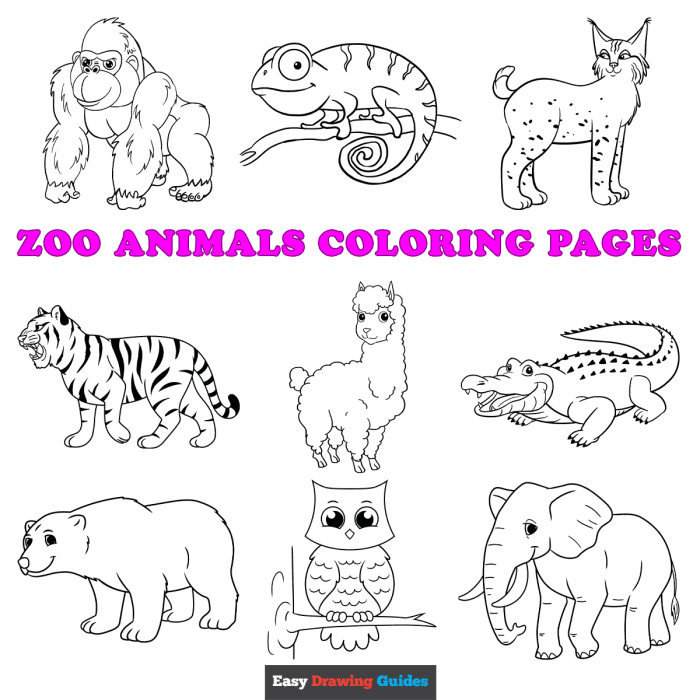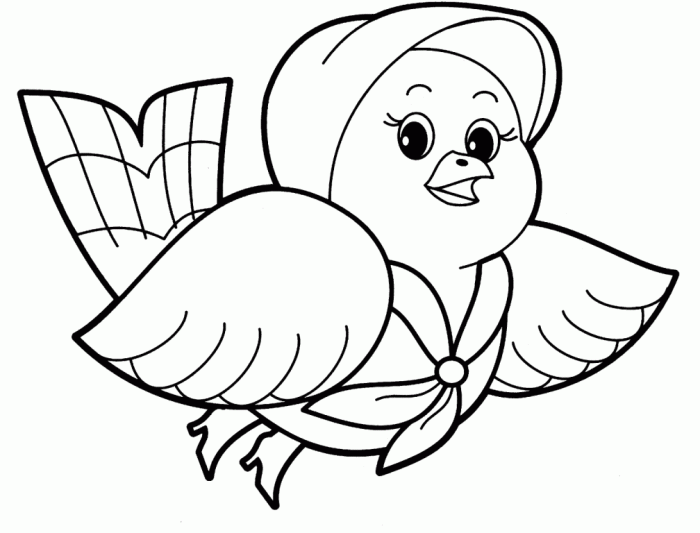Animal Selection & Themes

Animal coloring worksheets for kids – Choosing the right animals for children’s coloring worksheets is crucial for engagement and educational value. The selection should consider the age group of the child, their developmental stage, and the level of detail appropriate for their coloring abilities. Thematic approaches, such as focusing on animal habitats, can further enhance the learning experience.Animal selection should also account for children’s familiarity and interest in certain animals.
Animal coloring worksheets for kids are a fun and educational activity, offering a creative way to learn about different creatures. To enhance the learning experience, consider incorporating a more structured approach, such as using a worksheet that focuses on animal classification; for instance, you might find a helpful resource like this animal classification coloring sheet matching activity.
This allows children to not only color but also categorize animals based on their characteristics, making the learning process more engaging and reinforcing key concepts. Ultimately, the goal is to make learning about animals enjoyable for kids through various coloring activities.
Worksheets featuring popular animals are more likely to capture children’s attention and encourage them to engage in the activity. Furthermore, the level of detail in the animal illustrations should match the age group, ensuring that the task is neither too challenging nor too simplistic.
Animal Selection by Age Group
Selecting animals based on age appropriateness ensures a suitable challenge for each child. Preschoolers benefit from simple shapes and bold Artikels, while older children can handle more intricate details.
- Preschool (Ages 3-5): Cat, dog, bird, fish, butterfly, bear, elephant, giraffe, lion, monkey.
- Early Elementary (Ages 6-8): Rabbit, squirrel, frog, penguin, turtle, horse, cow, pig, sheep, deer.
- Late Elementary (Ages 9-12): Shark, owl, eagle, wolf, fox, tiger, snake, crocodile, chameleon, octopus.
Educational Value of Animal Habitats as Themes
Using different animal habitats as themes for coloring worksheets offers a valuable opportunity to teach children about biodiversity, ecosystems, and environmental awareness. Each habitat presents unique characteristics and challenges, which can be explored through the coloring activity. Children can learn about the animals’ adaptations to their environment and the relationships between different species within the same habitat.
- Arctic: Polar bear, arctic fox, penguin, seal.
- Ocean: Dolphin, whale, shark, sea turtle, octopus.
- Jungle: Monkey, parrot, jaguar, snake, sloth.
- Savanna: Lion, elephant, giraffe, zebra, rhino.
- Forest: Deer, fox, owl, squirrel, bear.
Creative Animal Coloring Page Themes, Animal coloring worksheets for kids
Moving beyond typical farm or zoo animals opens up a world of creative possibilities for coloring worksheets. These themes can spark imagination and introduce children to less familiar animals and environments.
- Mythical Creatures: Unicorns, dragons, griffins, phoenixes. These fantastical creatures allow for creative freedom in design and coloring.
- Under the Sea Adventure: This theme could include a treasure chest, sunken ship, and various sea creatures, creating a story-like coloring experience.
- Prehistoric Animals: Dinosaurs, mammoths, saber-toothed cats. This theme introduces children to extinct animals and their unique characteristics, fostering an interest in paleontology.
Printable Format & Accessibility

Creating high-quality, printable coloring worksheets requires careful consideration of both the digital printing process and the accessibility needs of all children. Ensuring vibrant colors, sharp lines, and easy-to-print files is crucial for a positive user experience. Furthermore, designing for accessibility promotes inclusivity and allows children with visual impairments to enjoy the activity.Preparing coloring worksheets for digital printing involves several key steps to guarantee optimal results.
High-resolution images and appropriate file formats are vital for maintaining image quality during the printing process. Furthermore, considering the paper type and printer settings can significantly impact the final product’s appearance.
Preparing Coloring Worksheets for Digital Printing
- High-Resolution Images: Use images with a resolution of at least 300 DPI (dots per inch). Lower resolutions will result in blurry or pixelated prints. Vector graphics (like those created in Adobe Illustrator) are ideal as they can be scaled without losing quality.
- File Format: Save your artwork as a PDF (Portable Document Format). PDFs preserve the image quality and formatting across different devices and printers. Avoid using JPEGs, as they can lose quality with each save.
- Color Mode: Use CMYK (Cyan, Magenta, Yellow, Key/Black) color mode for printing. RGB (Red, Green, Blue) is designed for screens and will often produce inaccurate colors when printed.
- Bleed and Margins: Add a bleed (a small amount of extra artwork extending beyond the trim area) to prevent white edges after trimming. Include appropriate margins to avoid important elements being cut off during printing.
- Printer Settings: When printing, select the highest quality print setting available on your printer. Consider using heavier weight paper (at least 80lb or 120gsm) for durability and to prevent show-through of ink on the other side.
Designing Accessible Coloring Worksheets for Children with Visual Impairments
Creating accessible coloring pages requires careful consideration of visual elements and the provision of alternative formats. Thick lines, high contrast colors, and simplified designs are crucial for making the activity enjoyable and manageable for children with visual impairments. Additionally, providing alternative formats such as tactile versions allows wider participation.
- Bold Artikels: Use thick, dark Artikels around the images to ensure clear definition and easier tracing for children with low vision.
- High Contrast Colors: Employ color combinations with significant contrast between the lines and the background. For example, black lines on a bright white or yellow background.
- Simplified Designs: Opt for simple images with fewer details to reduce visual complexity. Avoid intricate patterns or small, fine lines that may be difficult to see.
- Alternative Formats: Consider creating tactile versions of the coloring pages using raised lines or textured materials for children who are blind or have low vision. These can be created using embossing techniques or 3D printing.
- Large Print Option: Offer a larger-sized printable version of the coloring page, increasing the size of the image and the lines for easier coloring.
Creating an Accessible PDF Coloring Page
To create an accessible PDF coloring page, begin by designing the page using high-resolution images and bold Artikels, prioritizing high contrast colors and simplified designs. Save the artwork as a PDF with appropriate margins and bleed settings. Ensure the file size is optimized for easy download and printing. Include descriptive alt text for any images included in the PDF.
Consider providing a separate, tactile version as a supplemental resource. This ensures wider access and enjoyment of the coloring activity.
Helpful Answers: Animal Coloring Worksheets For Kids
What type of paper is best for animal coloring worksheets?
Heavier weight paper, such as cardstock, is ideal to prevent bleed-through and tearing, especially with younger children using markers or crayons.
How can I make my animal coloring worksheets more engaging?
Incorporate interactive elements like hidden pictures, simple puzzles, or small writing prompts related to the animals. You can also add stickers or allow for creative additions after coloring.
Are there benefits to using digital coloring worksheets?
Digital versions offer the advantage of easy sharing and storage, as well as the ability to adjust colors and sizes. They are also environmentally friendly, reducing paper consumption.
How can I adapt coloring worksheets for children with motor skill challenges?
Use larger images and thicker lines for easier coloring. Consider using larger crayons or chunky markers to improve grip. Also, focus on simpler designs.
